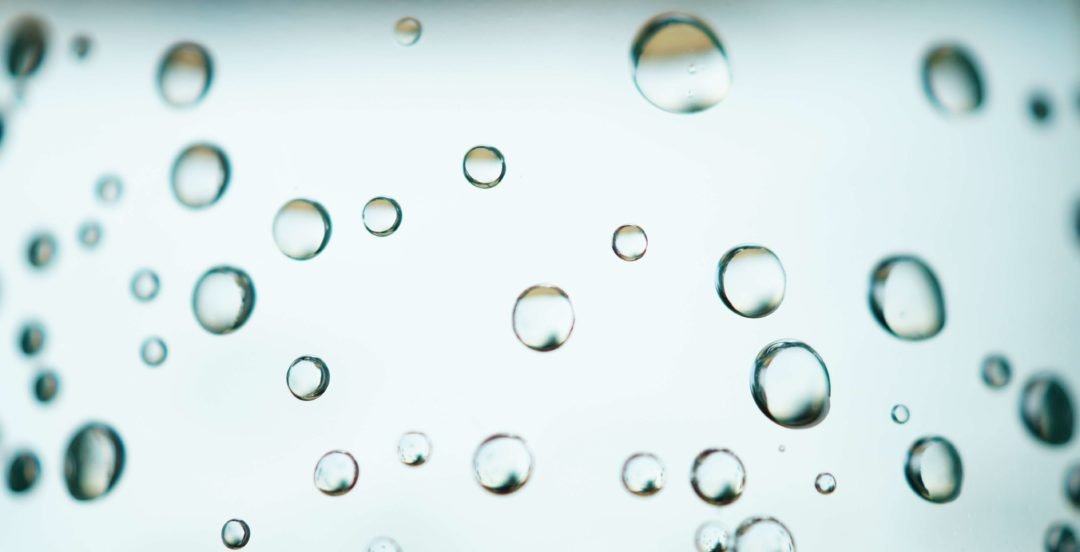Moisture and Flooring: Understanding and Preventing Flooring Failures
If you have any concerns about moisture and flooring, here’s a quick reference that I hope will be helpful.
I recently gave a talk on this topic to a room full of architects, and it’s clear that the problem of moisture and flooring is of growing concern.
Here’s more on why that is and what products can help with this issue:
1.) Why is subfloor moisture a growing issue?
Floor-covering materials have become less permeable, which means moisture can’t get out – so it gets trapped beneath the floor covering itself and, sooner or later, can cause problems or failures with the flooring.
As flooring adhesives became more eco-friendly, they also became less resistant to moisture and alkalinity.
Before the late 90s, often vapor retarders either were not used, were of poor quality, or were installed incorrectly.
Certain concrete practices, like using lightweight concrete, hydrated aggregate, and curing and release compounds can significantly increase the drying time of new concrete. Also, burnishing or sealing the slab keeps moisture in.
Construction timelines are shortening, pressuring flooring installation to happen before concrete is dry, and before the HVAC system is operational, or the building is enclosed.
HVAC systems are often cycled, particularly in schools and offices, to minimize energy costs. This results in moisture migrating in and out of the concrete, whether on or above grade, resulting in moisture-related flooring installation compromises or failures. Concrete is a living thing and never fully dries – moisture is always present.
2.) What problems are caused by subfloor moisture?
Flooring failures (blistering, debonding, adhesive degradation, etc.)
Mold, mildew, fungus, and bacterial growth
An estimated $2.4 billion in costs each year in North America in remediation from moisture-related flooring failures (…plus fun litigation.)
An additional $1.2 billion is spent annually on topical moisture treatments to mitigate moisture issues before the floor covering is installed
(Note: Mitigation is not a fun expense, but is about ten times cheaper than remediation after a failure.)
3.) What flooring products can help?
We love all the manufacturers we work with – and where moisture is concerned, Tandus Centiva (Tarkett), Milliken, Ardex, and others have great options to help avoid moisture-related problems.
Tandus Powerbond
Looks and feels like carpet, but acts like sheet vinyl (soft/resilient hybrid product in 6-foot rolled goods)
Closed-cell construction – moisture cannot penetrate, but the vapor can “breathe through”
50-year track record
Can install without moisture mitigation, as long as there is no free water (Visit Tandus Powerbond for more information. It’s awesome . . . really.)
Tandus Carpet Tile
Can also install without moisture mitigation, as long as there is no free water
Note: The order must include Ethos backing and Omnicoat Technology, and be installed with Tarkett Tape (Omnicoat)
Tandus Adaptt LVT
Floating floor with waved backing that allows the sub-floor to breathe (Adaptt)
Can be installed in areas with 95% RH or lower
If 95%-99% RH, install with SureStart Underlayment – it’s impermeable to moisture/water vapor
Milliken Carpet Tile
Open-celled cushion back – moisture vapor can “breathe through” (Milliken)
Moisture guarantee – zero moisture claims in 25 years
Also: lasts up to 40% longer because the cushion has “give” and fibers don’t get crushed (…We love Milliken – and feet love them too.)
Moisture Mitigation Systems
These epoxy-like coatings penetrate into the slab to seal out moisture.
Ardex MC Rapid or Schonox EPA – go-to options, good up to 100% RH (Ardex MC Rapid, Schonox EPA)
Ardex VR98 – more cost-effective system, good up to 98% RH
Moisture-tolerant adhesives
We’re suspicious of these adhesives in general – their performance often does not live up to the marketing.
Mold, mildew, fungal and bacterial prevention
To protect subfloors long-term from growing nasty stuff, BioProtect is a product we can spray on the subfloor – it inhibits the growth of mold, mildew, algae, bacteria, and yeast growth (costs just cents per square foot).
4.) Other Considerations
It’s very important to note that any moisture guarantees such as those above are conditioned on the presence of a high-quality vapor retarder (…and a slab that’s 20+ years old may not have one). In general, be suspicious of marketing claims – as one of my mentors says, words don’t change the laws of physics and chemistry.
Speaking of physics, a quick note – with permeable floor-covering like Milliken and Powerbond, if solid-bottomed furniture or chair pads are placed on top, they can trap moisture and cause problems.
Even with the use of specialized flooring materials and ancillary products, moisture may still find a way to spoil a flooring project, so the best bet is to keep a moisture problem from occurring by planning in advance of a construction project – getting the architect, owner, GC, concrete contractor, and flooring contractor all on the same page to ward off any future problems. Once a moisture issue is present, however, there are some good options for dealing with it before flooring is installed.
We test for moisture often – and we also highly recommend getting an independent, third-party, certified moisture-testing company to provide a comprehensive report. A great option for that is IFTI – they have hundreds of certified testers around the country.
Please let us know if you have any additional questions on how to prevent flooring failures caused by moisture by contacting us or reaching out to abby@gpflooringsolutions.com today!


